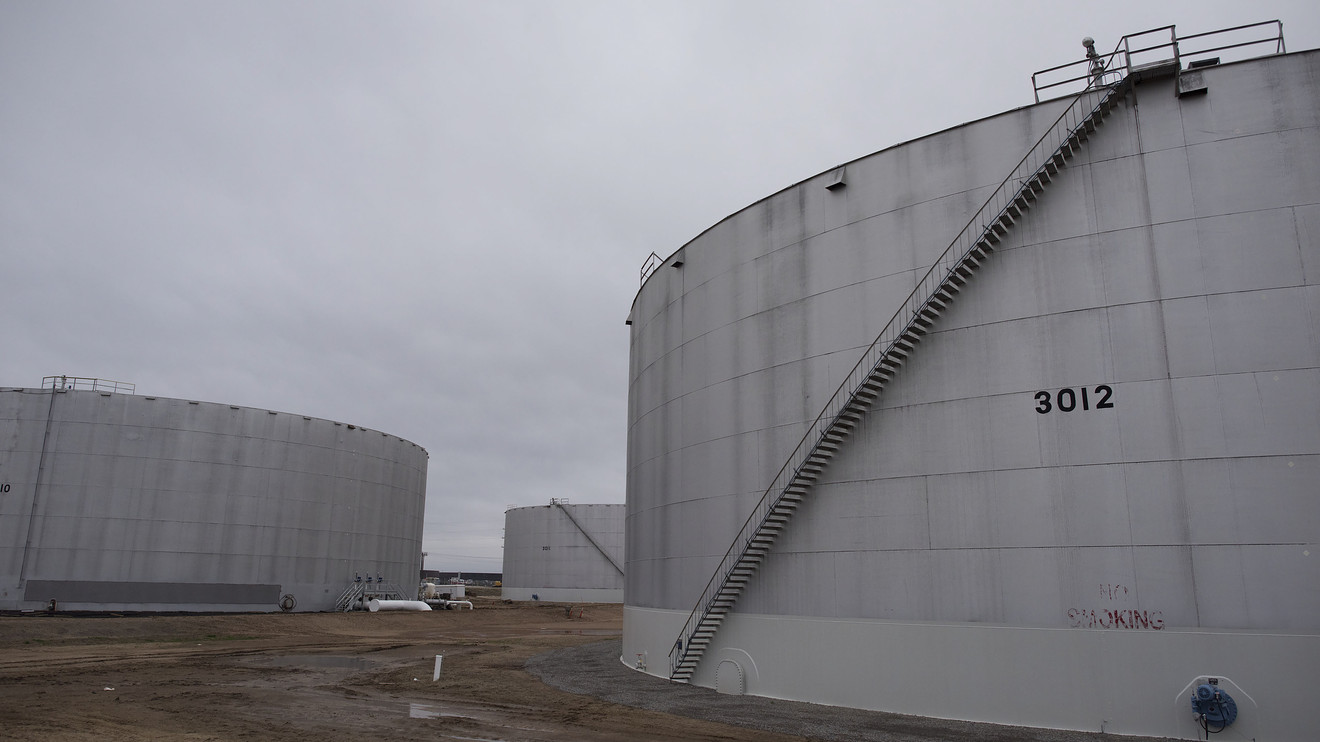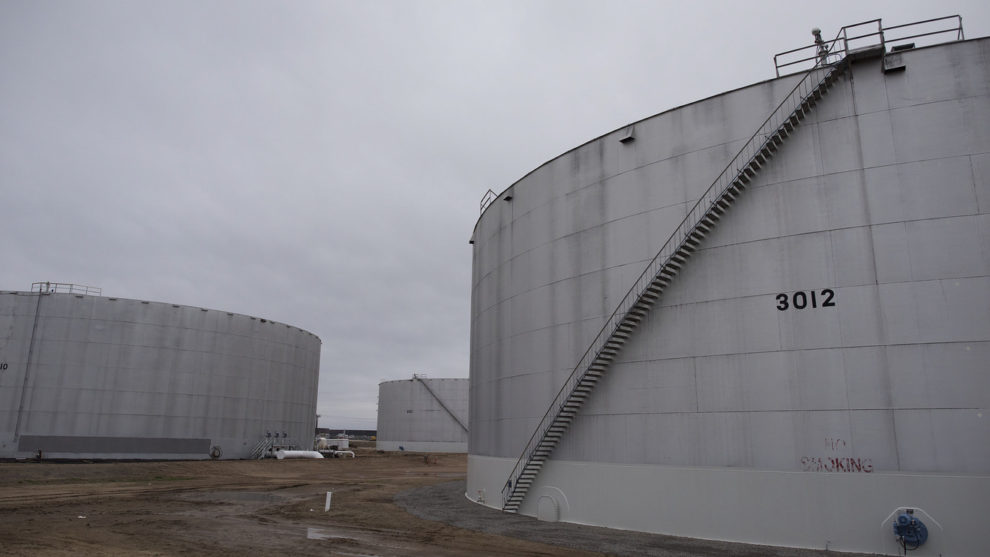
U.S. oil futures turned lower on Thursday after a government report revealed that domestic crude inventories rose a third straight week, gasoline supplies logged their first climb in seven weeks and production reached a new record level.
The bearish supply and production data by the [Energy Information Administration] and “lack of clarity” on the U.S.’s plans for tariff policy changes as part of the phase one trade deal with China, are “both negative influences on the market,” said Tyler Richey, co-editor of Sevens Report Research. These are “likely to pressure futures into the end of the week.”
On a longer time frame, WTI oil “remains frustratingly rangebound between support in the low $50s and resistance in the low $60s and that is likely to continue in the absence of a material trade war or economic catalyst,” Richey told MarketWatch.
West Texas Intermediate crude futures for December delivery CLZ19, -0.56% fell by 19 cents, or 0.3%, to $56.93 a barrel on the New York Mercantile Exchange. Global benchmark January Brent crude BRNF20, -0.02%, however, was up 18 cents, or 0.3%, at $62.55 a barrel on ICE Futures Europe.
The Energy Information Administration on Thursday reported that U.S. crude supplies rose by 2.2 million barrels for the week ended Nov. 8. The data came out a day later than usual because of Monday’s Veterans Day holiday.
Crude supplies were forecast to increase by 1 million barrels, according to analysts polled by S&P Global Platts. The American Petroleum Institute on Wednesday reported a decline of 541,000 barrels.
Domestic production, meanwhile, rose by 200,000 barrels per day to 12.8 million barrels a day—a new record, said Richey.
“Right now, upstream operations clearly remain healthy,” with average weekly production growth of 23,000 barrels per day over the last calendar year, he said. “If that pace continues into 2020, it will mean U.S. production levels of roughly 14 [million barrels a day] by next December,” which is significantly higher than the current EIA expectation calling for an average of 13.2 million barrels a day in 2020.
The EIA data also showed a supply increase of 1.9 million barrels for gasoline, but distillate stocks fell by 2.5 million barrels. The S&P Global Platts survey showed expectations for supply decreases of 1.7 million barrels for gasoline and 1.6 million barrels for distillates.
Gasoline supplies haven’t posted a weekly climb since the week ended Sept. 20, according to EIA data.
On Nymex, December gasoline RBZ19, -1.12% fell 0.7% to $1.6252 a gallon, while December heating oil HOZ19, +0.32% was up 0.5% at $1.9218 a gallon.
Natural-gas futures held onto the bulk of their earlier gains after the EIA reported Thursday that domestic supplies of natural gas rose by 3 billion cubic feet for the week ended Nov. 8. Analysts expected a build of 7 billion cubic feet, on average, by analysts polled by S&P Global Platts.
December natural gas NGZ19, +1.73% rose 6.6 cents, or 2.5%, to $2.666 per million British thermal units.
In other news Thursday, the Organization of the Petroleum Exporting Countries, or OPEC, trimmed its forecast for U.S. crude output growth next year by 33,000 barrels a day to 1.5 million barrels a day. OPEC, in its monthly report, left its forecast for 2019 and 2020 global oil-demand growth unchanged from its October estimates.
Read: Producers are putting the brakes on the shale boom—here’s what that means for oil prices
div > iframe { width: 100% !important; min-width: 300px; max-width: 800px; } ]]>











Add Comment